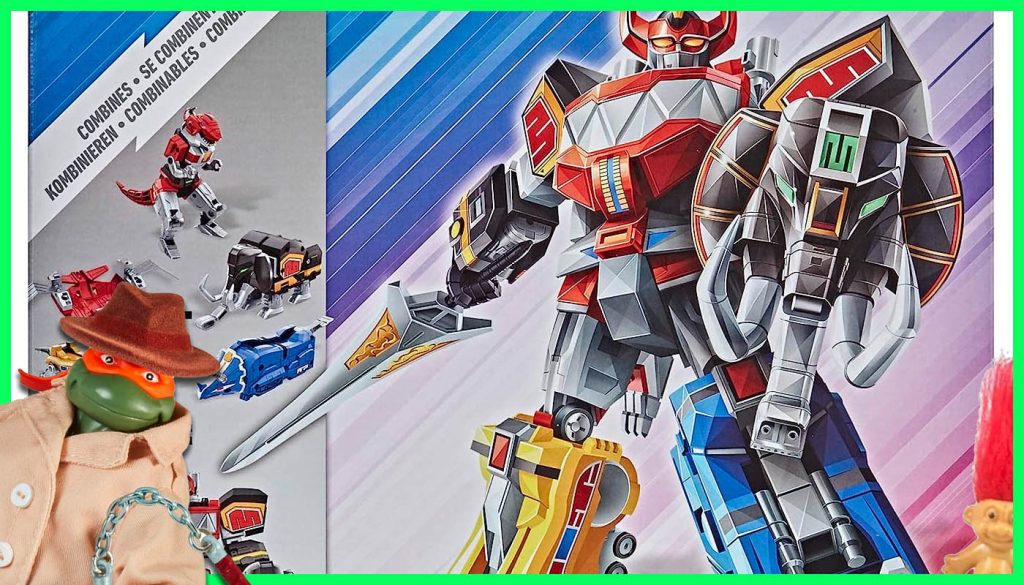When you buy through our links, we may earn a commission. Learn more.
Toy Technology in the 2010s
The 2010s witnessed significant advancements in toy technology, with new high-tech interactive toys and a fusion of video games with virtual play that transformed the landscape of children’s entertainment.
High-Tech Interactive Toys
Leading the charge in the realm of high-tech toys, Sphero’s BB-8 emerged as a standout. As a miniature version of the beloved droid from Star Wars, BB-8 was not just a toy but a feat of technology. It paired with smartphones allowing kids (and adults) to control its movements with intuitive swipe gestures. The BB-8 toy used gyroscopic motion, voice recognition, and even had an adaptive personality that changed as you played with it.
In addition to licensed characters, the 2010s brought an array of smart, connected toys designed to educate and entertain. These toys often incorporated AI and machine learning to interact with users, providing an immersive play experience that was unheard of in previous decades.
Video Games and Virtual Play
During the 2010s, the Nintendo Switch revolutionized video gaming with its hybrid design. It could be used as a home console or a portable device, seamlessly adapting to a player’s lifestyle. The Nintendo Switch was a game-changer, literally, with its detachable Joy-Con controllers that allowed for versatile gaming modes—solo, dual, or multiplayer.
Minecraft is another entity that left an indelible mark on the decade. It wasn’t just a game; it was a canvas for creativity. Minecraft’s sandbox world where players could build, explore, and survive, resonated with gamers of all ages. Its cross-platform play functionality made it a culturally unifying experience for players around the globe.
Most Popular Toys and Brands
The 2010s were a dynamic decade for toys, with numerous brands pushing the envelope of innovation and excitement. Children and collectors alike were enthralled by the novel designs and interactive features that became the hallmark of the period.
Innovative Toy Lines
Zhu Zhu Pets became a phenomenal success due to their lifelike behavior and adorable designs. These motorized toy hamsters mimicked real pets without the associated maintenance, endearing them to parents and children alike.
L.O.L. Surprise took the market by storm with their clever packaging and the excitement of unwrapping multiple layers to reveal dolls, stickers, clothes, and accessories. Their pocket-sized surprises kept the children’s anticipation high with each new release.
Paper Jamz Guitar showed ingenuity by blending music and technology with a series of paper-thin musical instruments. They offered an affordable and accessible entry into music-making, broadening their appeal beyond traditional toy consumers.
Leading Toy Manufacturers
Mattel remained a titan in the toy industry, consistently updating their product lines and engaging children with new, imaginative play settings. They produced a diverse range of toys that spanned different categories, ensuring their continued presence in the market.
Toy enthusiasts reveled in the array of offerings from various manufacturers as they sought the most coveted items for play and collection. These brands and toys encapsulated the spirit and innovation of the decade, inviting kids to interactive and creative play experiences.
Educational Toys from 2010
The 2010s saw a rise in toys that were not only fun but also fueled creativity and learning. They became crucial tools in child development, encouraging imagination and problem-solving skills.
Building Creativity with Toys
LEGO sets have been instrumental in nurturing young architects and engineers. The brand expanded its range with themed kits, including popular Disney franchises, allowing children to reenact stories and construct their own magical kingdoms. These sets cultivate spatial awareness and strategic planning, giving kids the means to translate their visions into tangible creations.
- LEGO Disney Castle
- LEGO Star Wars Millennium Falcon
Tonka Garage Ricochet RC, a remote-controlled vehicle, presented an intersection of hands-on play and the thrill of technology. The toy engaged children in understanding mechanics and control, further stirring their curiosity about how things work.
Learning Through Play
“Loopz” stood out as an innovative electronic game that combined music, memory, and motion. Players had to mimic sequences of lights and sounds, enhancing cognitive skills through an enticing and interactive format.
| Loopz Game Features | Benefits for Children |
|---|---|
| Memory matching | Improves concentration |
| Movement-based interaction | Promotes physical activity |
| Musical elements | Encourages musicality and rhythm |
Toys that merged learning with play helped lay the foundation for educational success. By fostering an early love for knowledge through engaging activities, toys from the 2010s demonstrated that education could be as exciting as it was enriching.
Older Toys in the Media
The 2010s saw toys grab the limelight in media and entertainment like never before. They featured prominently in blockbuster films and viral social media trends, captivating audiences and driving toy sales.
Toys Featured in Films
Toy Story, a beloved film franchise, continued to capture hearts with its third and fourth installments released in 2010 and 2019 respectively. The series, which anthropomorphizes toys, underscores the profound emotional connections people have with their playthings. The films’ success catalyzed merchandise sales, with characters like Woody and Buzz Lightyear becoming ubiquitous on shelves around the world.
- Film Title: Toy Story 3 (2010)
- Notable Characters: Woody, Buzz Lightyear
- Impact: Increased toy sales; nostalgia-driven popularity
Toys Going Viral on Social Media
The rise of YouTube as a dominant media platform gave toys another stage to shine. Unboxing videos and play sessions became a hit, and toys like Fingerlings and slime kits soared in popularity thanks to viral YouTube channels. These toys captivated children’s attention and became must-have items, with parents scouring stores to meet demand.
- Viral Toy Examples:
- Fingerlings: Interactive animal toys that cling to fingers
- Slime: DIY kits that let children create custom, squishy compounds
Social media platforms played a significant role in the spread of these trends, democratizing the way toys were advertised and enjoyed.
Consumer Trends from 2010
In the 2010s, toy industry trends were significantly influenced by the economic situation, with clear divisions between affordable and high-end toys, and a focus on generational appeal that balanced nostalgia with innovation.
Affordable vs. Luxury Toys
Consumers in the 2010s often faced the choice between affordable toys and those considered luxury items. The economic climate fostered a market where inexpensive toys thrived due to tight household budgets. Retailers saw a surge in sales of more cost-effective toys, as parents and gift-givers sought to maximize value. On the other hand, luxury toys carved out a niche, with some parents willing to invest in high-quality items, believing they offer a superior play experience or longer-lasting value.
- Affordable Options:
- Durability: Emphasis on toys that could withstand extensive play.
- Price Point: Toys priced under $20 were particularly popular.
- Luxury Toys:
- Exclusivity: Higher price often meant more features or brand prestige.
- Quality: Tended to be more durable and detailed than their cheaper counterparts.
Generational Toy Appeal
Toys in the 2010s were masterfully designed to appeal across generations. Kids were enchanted by novel toys like Hatchimals, which combined the excitement of interactive play with the element of surprise. These toys created a massive buzz, becoming a sensation and often selling out during the holiday season. Meanwhile, adults appreciated toys that evoked their own childhoods, bringing a sense of nostalgia to the purchasing decision.
- Children:
- Interaction: Toys that responded to touch or voice were particularly successful with this demographic.
- Innovation: Hatchimals and similar toys represented a peak in toy innovation.
- Adults:
- Nostalgia: Brands that revived or continued 80s and 90s toy lines found a captive audience.
- Collectibility: Limited editions and rare finds were especially appealing to adult collectors.
I’m Cartez Augustus, a content creator based in Houston, Texas. I’ve been exploring a variety of niches in content marketing in order to increase website traffic. I enjoy experimenting with artificial intelligence, search engine optimization, and paid search. The process of creating nerd-related content has been extremely rewarding since it has enabled me to network with people who are knowledgeable about these subjects.





